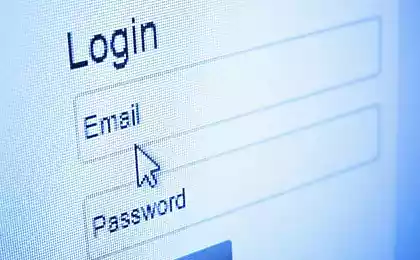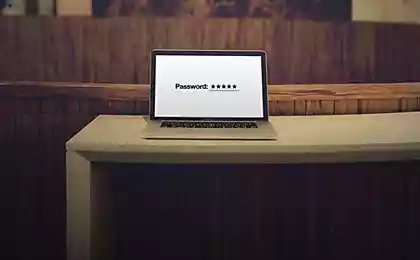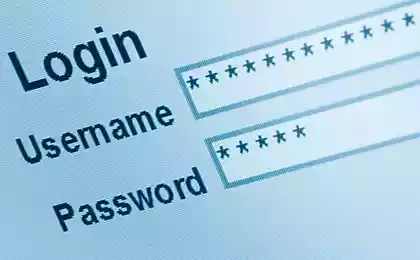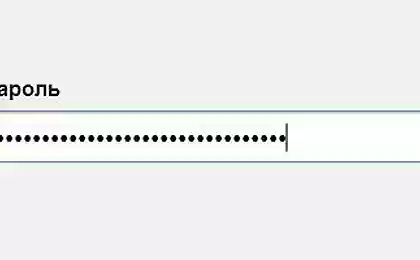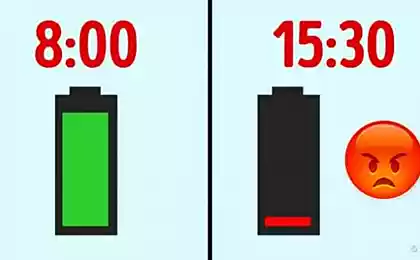491
How to easily remember strong passwords
We all know that it is good to have passwords consisting of uppercase and lowercase letters, numbers, and special characters. Also we all know that it's good to have different passwords for each site and that the main reason why we did not do, is the difficulty of remembering them.

However, you do not need to remember multiple passwords — you just need to memorize one set of rules that will allow you to quickly recall your password to any website. Here's what you need.
1. Remember the list of words corresponding to the letters of the alphabet
It seems complicated but really is quite simple. A week later you will be able to remember them all without any problems. Take for example passwords in Latin, and, accordingly, the English alphabet consisting of 26 letters. To remember 26 random words is quite difficult, however, the location of them in alphabetical order will make the brain believe they have structure, and structure is easy enough to remember.
Example:
aardvark, bear, camel, duck, elephant, fox, giraffe, hamster and so on
2. Change the words so that they were incomplete
Use full words – it's a bad idea, because one of the hackers ' strategies is just the dictionary. There are numerous ways to transform words – swap some of the letters remove all vowels, and so on. In this example, we will leave from words only the first three letters, in order to simplify the understanding of the technology.
Example:
aar, bea, cam, duc, ele, fox, gir, ham...
3. Replace the letters in the name of your desired website
Use non-obvious pattern. In this example we use the first four letters of the website name, but in reverse order. An example is the website of a non-existent website cabernet.com Four letters of e-b-a-c transformirovalsya:
elebeaaarcam
4. Add some rules for upper case letters, numbers and special characters
We already have a very good password, so we can use a not-too-complex rules that can be quickly applied. In this example, we:
— Make the first and last consonant in uppercase
In the middle of a word, insert 858 if the website is domain .com, 636, if it is in any other. (To do this, we'll take an easy to remember number 747 and increase or decrease it to one digit)
— At the end of words we will add the %$# (is special symbols located on the keys 543) if the website name starts with a vowel, and #$% (the same symbols in reverse order), if it begins with a consonant.
Now our password looks like this:
eLebea858arcaM#$%
This is extremely strong password, and its biggest advantage is that if hackers somehow find a vulnerability on the website, they will not get all of your other passwords or an easy way of calculating them.
For application of this method will require some mental effort – but in exchange you will receive a high level of security. In reality, the amount of required effort is not so great – our brains are very good at memorization and repetitive application of the rules.
istochnikami
Source: /users/1077

However, you do not need to remember multiple passwords — you just need to memorize one set of rules that will allow you to quickly recall your password to any website. Here's what you need.
1. Remember the list of words corresponding to the letters of the alphabet
It seems complicated but really is quite simple. A week later you will be able to remember them all without any problems. Take for example passwords in Latin, and, accordingly, the English alphabet consisting of 26 letters. To remember 26 random words is quite difficult, however, the location of them in alphabetical order will make the brain believe they have structure, and structure is easy enough to remember.
Example:
aardvark, bear, camel, duck, elephant, fox, giraffe, hamster and so on
2. Change the words so that they were incomplete
Use full words – it's a bad idea, because one of the hackers ' strategies is just the dictionary. There are numerous ways to transform words – swap some of the letters remove all vowels, and so on. In this example, we will leave from words only the first three letters, in order to simplify the understanding of the technology.
Example:
aar, bea, cam, duc, ele, fox, gir, ham...
3. Replace the letters in the name of your desired website
Use non-obvious pattern. In this example we use the first four letters of the website name, but in reverse order. An example is the website of a non-existent website cabernet.com Four letters of e-b-a-c transformirovalsya:
elebeaaarcam
4. Add some rules for upper case letters, numbers and special characters
We already have a very good password, so we can use a not-too-complex rules that can be quickly applied. In this example, we:
— Make the first and last consonant in uppercase
In the middle of a word, insert 858 if the website is domain .com, 636, if it is in any other. (To do this, we'll take an easy to remember number 747 and increase or decrease it to one digit)
— At the end of words we will add the %$# (is special symbols located on the keys 543) if the website name starts with a vowel, and #$% (the same symbols in reverse order), if it begins with a consonant.
Now our password looks like this:
eLebea858arcaM#$%
This is extremely strong password, and its biggest advantage is that if hackers somehow find a vulnerability on the website, they will not get all of your other passwords or an easy way of calculating them.
For application of this method will require some mental effort – but in exchange you will receive a high level of security. In reality, the amount of required effort is not so great – our brains are very good at memorization and repetitive application of the rules.
istochnikami
Source: /users/1077


